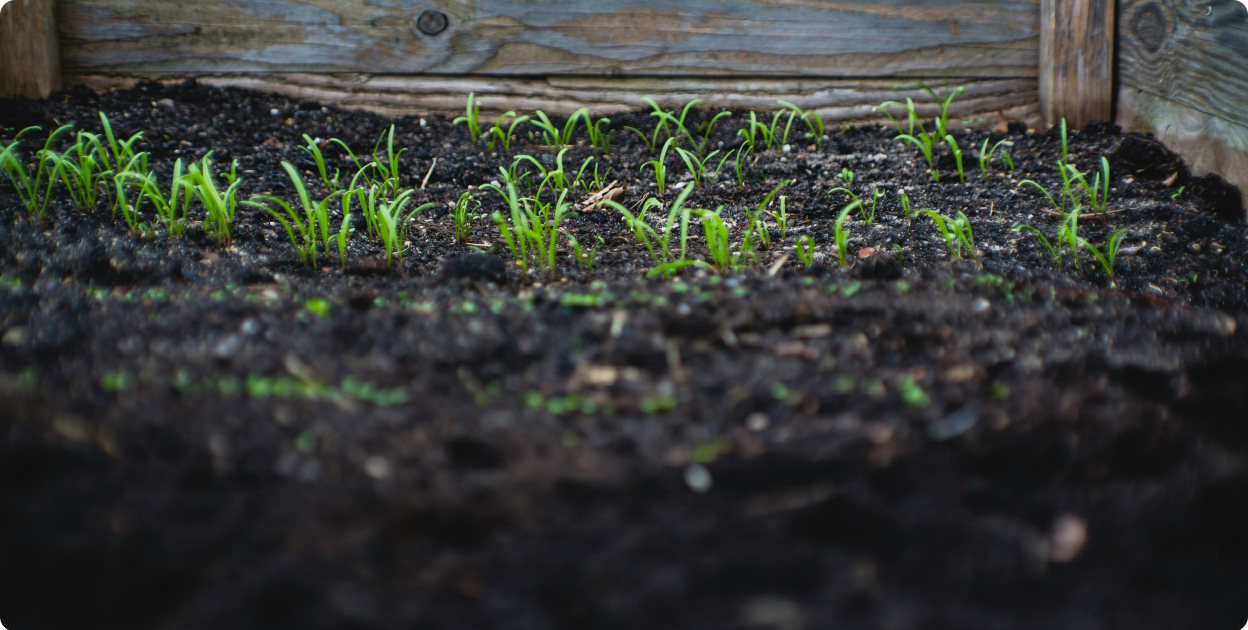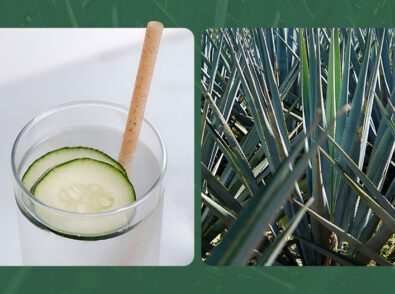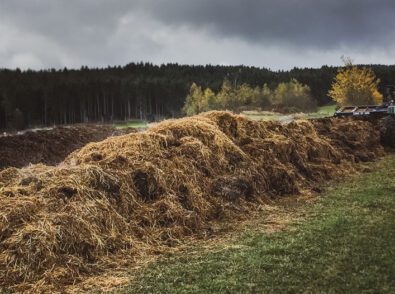Compostable Food Packaging Materials: Features and Benefits

There is a wide range of compostable materials on the market that are eco-friendly alternatives to plastic. Restaurant owners who choose compostable containers for food and beverages benefit from their sustainability, reliability, and convenience. Each compostable material has advantages and drawbacks to consider when deciding which is right for your restaurant’s cutlery, straws, plates, drink cups, containers, and other food packaging.
Features of Compostable Products
Compostable describes materials that break down into carbon dioxide, water, and biomass in a composting environment. This process creates compost that returns nutrients to the soil to help the ecosystem.
Compostable materials use thin and light paper or plant fibers that break down in composting. At the end of the product’s useful life, it goes into a composting facility, where it breaks down over several months.
How to Determine if a Food Container Is Compostable
Several composting certifications and standards exist for home or industrial compostability. Some of the most common include:
- Biodegradable Products Institute (BPI) certification to ensure the material meets industrial composting standards.
- Technischer Überwachungsverein (TÜV) Austria certifications for commercial and home composting and marine biodegradability.
- American Society for Testing and Materials (ASTM) standards like ASTM D6400.
Common Compostable Materials Used in Products
The most common compostable packaging supplies used in restaurants include:
1. PHA
Polyhydroxyalkanoates (PHA) is a bioplastic derived from the bacterial fermentation of vegetable oils, wastewater, starches, or sugars. PHA looks like plastic, except it is a compostable and biodegradable packaging material for land and marine environments. Its versatility and barrier properties make PHA a commonly used material for straws, cups, and cutlery.
PHA has poor mechanical and thermal stability, so be mindful of food and beverage temperatures when using PHA containers.
2. PLA
Polylactic acid (PLA) is a bioplastic made from corn or other fermentable sugars. It has the strength of conventional plastics but can biodegrade. PLA is one of the most transparent biodegradable materials, so it’s the best option for see-through packaging. PLA can be used for cold beverage cups, straws, bowls, cutlery, and food containers for refrigerated or frozen storage.
However, PLA warps under high temperatures. While you can’t store or serve hot food and drinks in PLA containers, you can use them for cold or room-temperature foods. PLA also has limited flexibility and durability.
3. tPLA and cPLA
Talc-injected polylactic acid (tPLA) and crystallized polylactic acid (cPLA) overcome the poor heat resistance of PLA by adding talc or crystallized PLA. tPLA has talc for strength and rigidity, and cPLA has crystallized PLA for improved heat resistance and strength. These upgrades don’t compromise compostability—tPLA and cPLA are fully compostable. You can use tPLA and cPLA for utensils, food containers, and beverage lids for hot foods.
If you choose tPLA and cPLA food packaging for your restaurant, you must compost these materials in a commercial composting facility. The cost of tPLA and cPLA can be more than PLA in some cases.
4. Cellulose
Cellulose is made from processing natural cellulose plant fibers, making it a compostable and food-safe alternative to petroleum-based products. After processing, cellulose is manufactured into paper, cellophane, or cardboard. For food storage, cellulose is durable, heat sealable, and oil resistant, so it can preserve food quality and flavor.
However, some cellulose packaging—mainly paper—is sensitive to moisture. These containers cannot be exposed to liquids for long without compromising the container. For soup bowls or beverage cups, cellulose may not be the best compostable packaging material.
5. Bamboo
Bamboo compostable materials are made from the exterior sheath of bamboo stalks or the entire bamboo plant. Bamboo is a renewable and abundant resource as one of the world’s fastest-growing plants, making it an eco-friendly alternative. Its tensile strength is stronger than steel per unit weight, so bamboo makes durable and compostable tableware, utensils, bowls, and cups.
Compared to other compostable materials used in products, the cost of bamboo food packaging can be higher. You will also need to compost these materials in an industrial composting facility.
6. Sugarcane Fiber
Sugarcane fiber—bagasse—is made from sugarcane stalks. After sugarcane has been harvested, the renewable fibers in the leftover stalks are transformed into bowls, cups, trays, and more. Sugarcane fiber products are similar to plastic foam food packaging in terms of properties but are a biodegradable alternative. It can tolerate high temperatures, resist grease and water, and maintain internal temperature.
Some of the cons of sugarcane fiber materials are limited durability and weakness compared to other biodegradable options.
7. Wheat Straw Fiber
Wheat straw fiber packaging is made from leftover wheat stalks after the harvest. This material is an alternative to tree-based or plastic foam containers that is completely biodegradable and compostable. For restaurants, wheat straw fiber food packaging materials are grease- and water-resistant, insulating, freezer- and microwave-safe, and heat-resistant.
However, wheat straw fiber has limited barrier properties. Some oxygen and moisture can pass through the material, which can reduce the food’s shelf life. If wheat straw fiber is exposed to too much moisture, it compromises the structural integrity of the container.
8. Palm Leaf
Most commonly made from naturally shed areca leaves from the betel nut palm, palm leaves can be heat-pressed into shape without binders or plastics. Because of this, plates, bowls, and other food packaging made from palm leaves tend to vary in texture and color due to natural material differences.
This biodegradable and compostable material is naturally sturdy, cut-resistant, and heat-safe for typical service. However, palm leaf is not liquid-proof, and prolonged exposure to soups or oils can soften the item or allow seepage.
9. Recycled Paper
Recycled paper compostable packaging supplies are made from post-consumer recycled paper. This material can be used for drink cups, cup sleeves, food containers, and bags. After use, recycled paper is compostable, even if it has a PLA lining.
One drawback of recycled paper containers is their limited durability. Since recycled paper is not as durable as other materials, it’s more susceptible to moisture damage that can compromise the food inside.
How to Choose Compostable Packaging Materials for Your Restaurant
When deciding which biodegradable packaging material to use in your restaurant, ask the following questions:
- Is the product made of compostable materials? Compostable goods must degrade within a specified time window. The amount of time it takes for a material to degrade varies based on the material thickness and plant fiber characteristics.
- Is the container designed for the type of food the restaurant serves? The container must be durable enough to store and preserve the food or drink you want to use it for. For example, burgers need a grease-resistant container, and soup must be stored in a container that can handle hot temperatures and remain leakproof.
- Which composting certifications does the packaging have? Check the product listing for BPI or TÜV logos, and verify the product’s certification to make sure it’s up to date.
- Has the product passed compostability certification? For a compostable material to be certified, it must first be tested in a simulated composting environment. Its decomposition process is analyzed to ensure it fully degrades without emitting harmful substances into the environment.
Learn More About Compostable Materials
Check out Greenprint’s home compostable and industrial compostable products. Get in touch with our team for more information about compostable goods for your restaurant.





